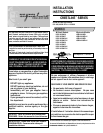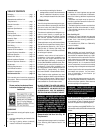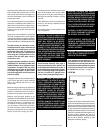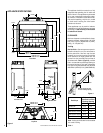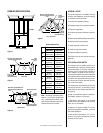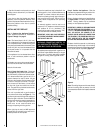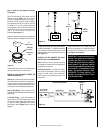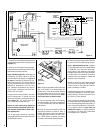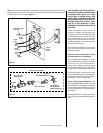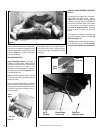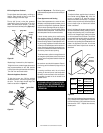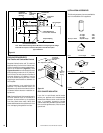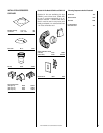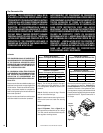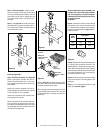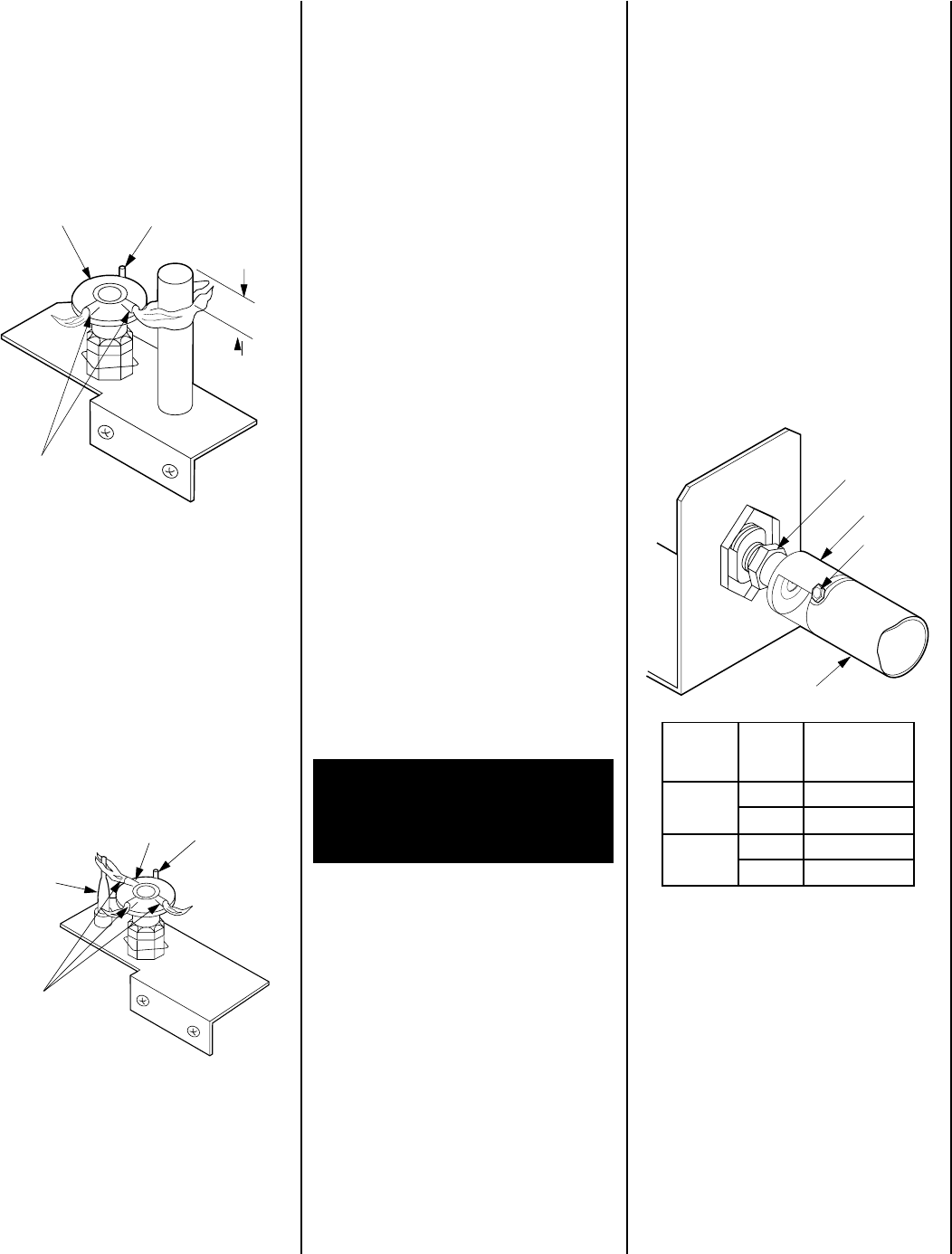
11
NOTE: DIAGRAMS & ILLUSTRATIONS NOT TO SCALE.
Figure 22
Adjustment
To adjust the flame, position the air shutter to
the nominal setting
(Figure 22 ).
Allow the
burner to operate for at least 30 minutes.
Observe the flame continuously. If it appears
weak or sooty as previously described, adjust
the air shutter open or closed until desired
effect is achieved.
Note: If the flame still appears anemic with the
air shutter closed all the way (usually a result of
lengthy vertical venting runs), turn off the appli-
ance, turn off the gas supply, wait for the parts
to cool and access the air shutter. The shutter
is prevented from actually closing by a tab that
is bent over into the opening. Remove this
obstruction by bending back. Reassemble and
restart the appliance and after 24 minutes
reobserve the flame. Adjust the air shutter as
described.
Figure 21
Replace logs if removed for pilot inspection.
To light the burner; rotate the gas valve control
knob counterclockwise to the “ON” position
(“ON” will be to the right hand side of the valve).
Turn “ON” the remote wall switch.
Electronic Appliance Checkout
To light the burner, turn ‘ON’ the optional
remote wall switch. Ensure the ignitor lights
the pilot. The pilot flame should engulf the
flame rod as shown in
Figure 21.
Step 10. Adjustments – The following para-
graphs address adjustment concerns and pro-
cedures.
Flame Appearance and Sooting
Proper flame appearance is a matter of taste.
Generally most people prefer the warm glow of
a yellow to orange flame. Appliances operated
with air shutter openings that are too large, or
with long vertical vent runs, will exhibit flames
that are blue and transparent. These weak, blue
and transparent flames are termed anemic.
If the air shutter opening is too small sooting
may develop. Sooting is indicated by black
puffs developing at the tips of very long orange
flames. Sooting results in black deposits form-
ing on the logs, appliance inside surfaces and
on exterior surfaces adjacent to the vent termi-
nation. Sooting is caused by incomplete com-
bustion in the flames and a lack of combustion
air entering the air shutter opening.
To achieve a warm yellow to orange flame with
an orange body that does not soot, the shutter
opening must be adjusted between these two
extremes.
No smoke or soot should be present. Reposi-
tion the log set if the flames impinge on any of
them.
If sooting conditions exist, the air shutter
opening on the main burner can be adjusted.
Normally, the more offsets in the vent system,
the greater the need for the air shutter to be
opened further.
Figure 20
When satisfied that the appliance operates prop-
erly, proceed to finish the installation. Leave the
control knob/lever in “ON” position and turn the
remote switch “OFF.” Replace the refractory
access panel.
Millivolt Appliance Checkout
The pilot flame should be steady, not lifting or
floating. Flame should be blue in color with
traces of orange at the outer edge.
The top 3/8" (9 mm) at the pilot generator
(thermopile) should be engulfed in the pilot
flame. The flame should project 1" (25 mm)
beyond the hood at all three ports
(Figure 20 ).
3/8
" Min
(9 mm)
Hood
Pilot
Nozzels
Ignitor Rod
WARNING: AIR SHUTTER ADJUSTMENT
SHOULD ONLY BE PERFORMED BY A
QUALIFIED PROFESSIONAL SERVICE
TECHNICIAN.
Factory Air
Models Shutter Setting
Inches (mm)
LSBV-3628
Gas
Type
Natural 1/8" (3.175 mm)
Propane 1/2" (12.7 mm)
LSBV-4228
Natural 1/8" (3.175 mm)
Propane 1/2" (12.7 mm)
Hood
Ignitor Rod
Pilot
Nozzels
Flame
Sensor
Orifice
Air Shutter
Burner Tube
Adjusting
Set Screw



